Riff writing artist masterclass
Morello, Perry, Borland and more on how to write riffs
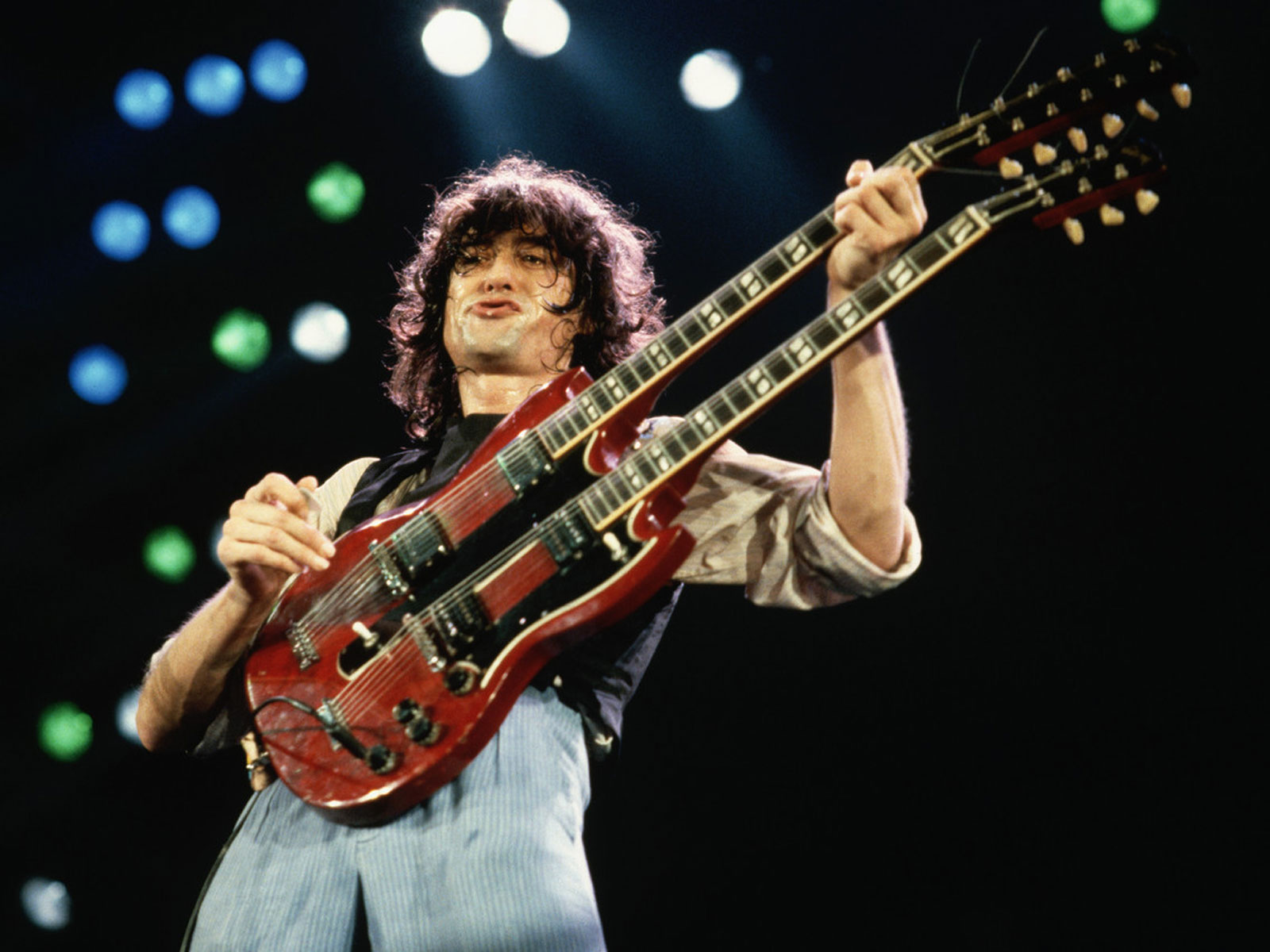
Introduction
WORLD GUITAR DAY 2017: From The Rolling Stones’ (I Can’t Get No) Satisfaction to Pantera’s Walk, the best guitar riffs are monstrous in their ability to captivate us. Many of the best riffs are compelling rhythmically and basic melodically.
Satisfaction features just three notes, while Led Zeppelin’s Immigrant Song has two (one, if you discount the octave), yet these brutal riffs connect to our inner caveman like Neolithic drumbeats. Our pulse quickens, our heads bob along involuntarily. If a riff literally moves you, you know you’ve got a great one on your hands.
Here, a collection of hugely successful riff writers pay tribute to the power of the riff, talk about some of their own greatest creations, and ponder the answer to the big question, 'What makes a great riff?'
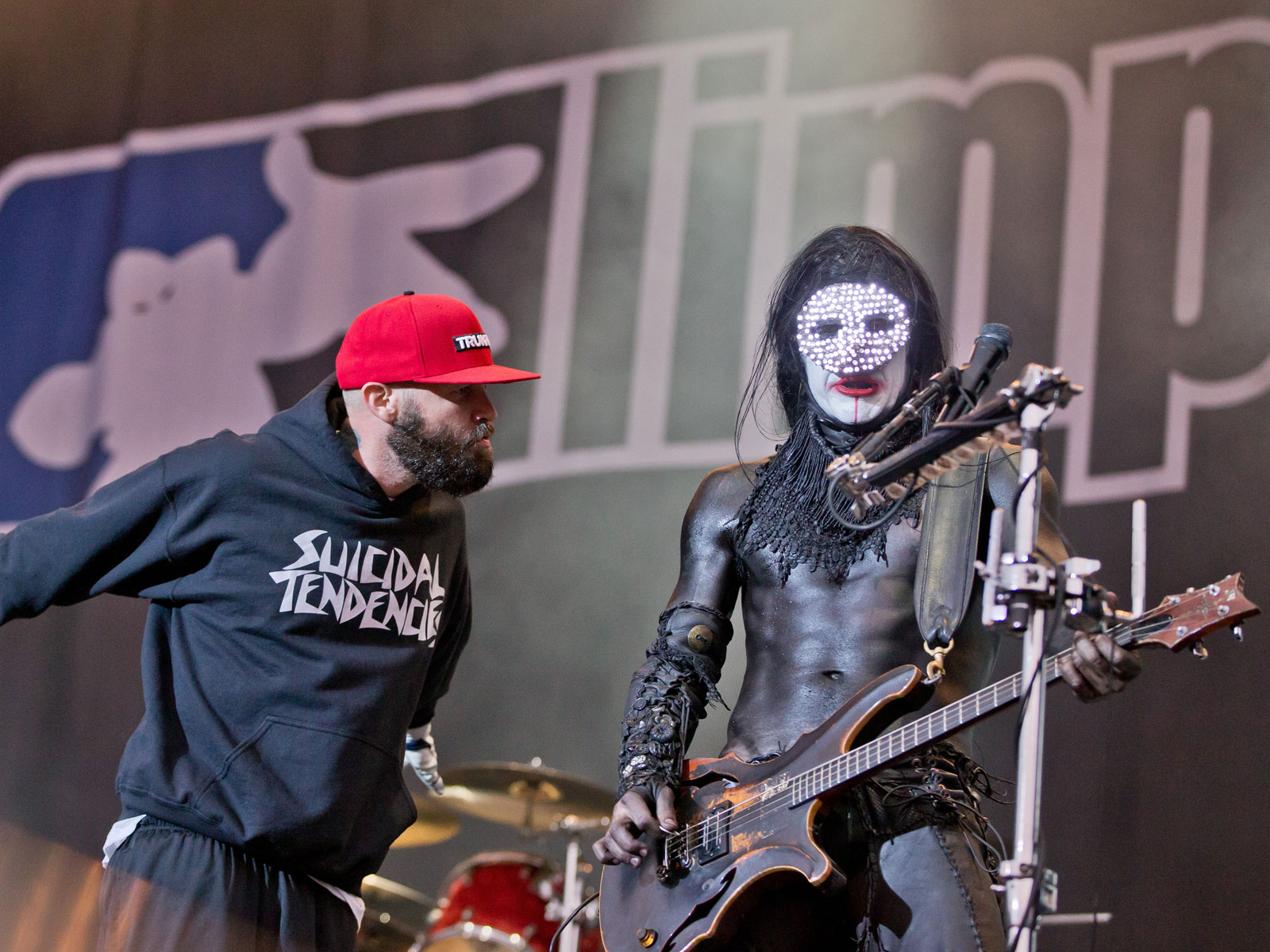
Wes Borland, Limp Bizkit
Whether he’s trying out guitar-busting tunings, discovering new music, or simply having a bad day, Limp Bizkit guitarist Wes Borland uses all of his experiences in his riff writing.
For Wes, having a really bad day turned out to be the inspiration behind one of his most iconic Limp Bizkit guitar riffs yet...
How do you come up with riffs?
“They just pop into my head. It happens unexpectedly. Religious people sometimes say that music comes from a higher power of some kind, but I’m an atheist so I believe that some people have images pop into their head and other people hear melodies. The key is to get to some kind of recording device before it’s gone. For me, that’s the most challenging part of riff writing: it’s easy to have it in your head, but I normally forget it quickly. I love my iPhone because I can hum a riff into it and listen to it later.”
What’s the key to writing a killer riff?
“It’s all about understanding that the spaces between the notes are as important as the notes themselves. When I write a riff, I always make sure that it flows with the other musicians in the band. When the non-musician part of your brain lights up and starts getting into it, then you know the riff is good because you’d turn it up if it came on the radio.”
How does the tuning of your guitar affect the way you write riffs?
“I’m always trying to alter the dimensions of my instruments. In fact, I’ve broken many guitars over the years from doing that. That definitely influences the riff writing. The guitar I’ve been working with most lately is an old Fender VI [baritone guitar] from the 60s. They’re really wild sounding and not too difficult to play if you’re also used to playing bass. I also have a guitar with a bass A string and A, D, G guitar strings.”
How did you come up with the riff for Break Stuff?
“That riff just came together around the idea of having a really awful day and wanting to kill everyone in your path! It came really fast; it wrote itself. It’s so simple and powerful because it goes to a tritone and that’s it. The middle is just back and forth on that tritone interval. No-one ever knows how influential a song will be when you’re writing it, you just hope for the best.”
What gear did you use to record that song?
“Four different guitars: two standard electrics with humbuckers, a layer of a Gretsch hollow body, a big Nashville guitar, and there’s an acoustic guitar mic’d and re-amped. I don’t know why we did it like that. We were just experimenting and having fun. We wanted to see how many layers we could get of different-sounding guitars.”
What tip would you offer to readers who are trying to improve their riff writing?
“Expose yourselves to as many riffs as you can. I’ve achieved some form of success by ripping off as many people as possible at once! I’m constantly trying to expose myself to new kinds of music and trying not to get into an incestuous listening process where I’m only listening to music that sounds like what I want to create. Try not to have a filter - just take the best of everything you’ve heard and mix it together.”
Limp Bizkit - Break Stuff:
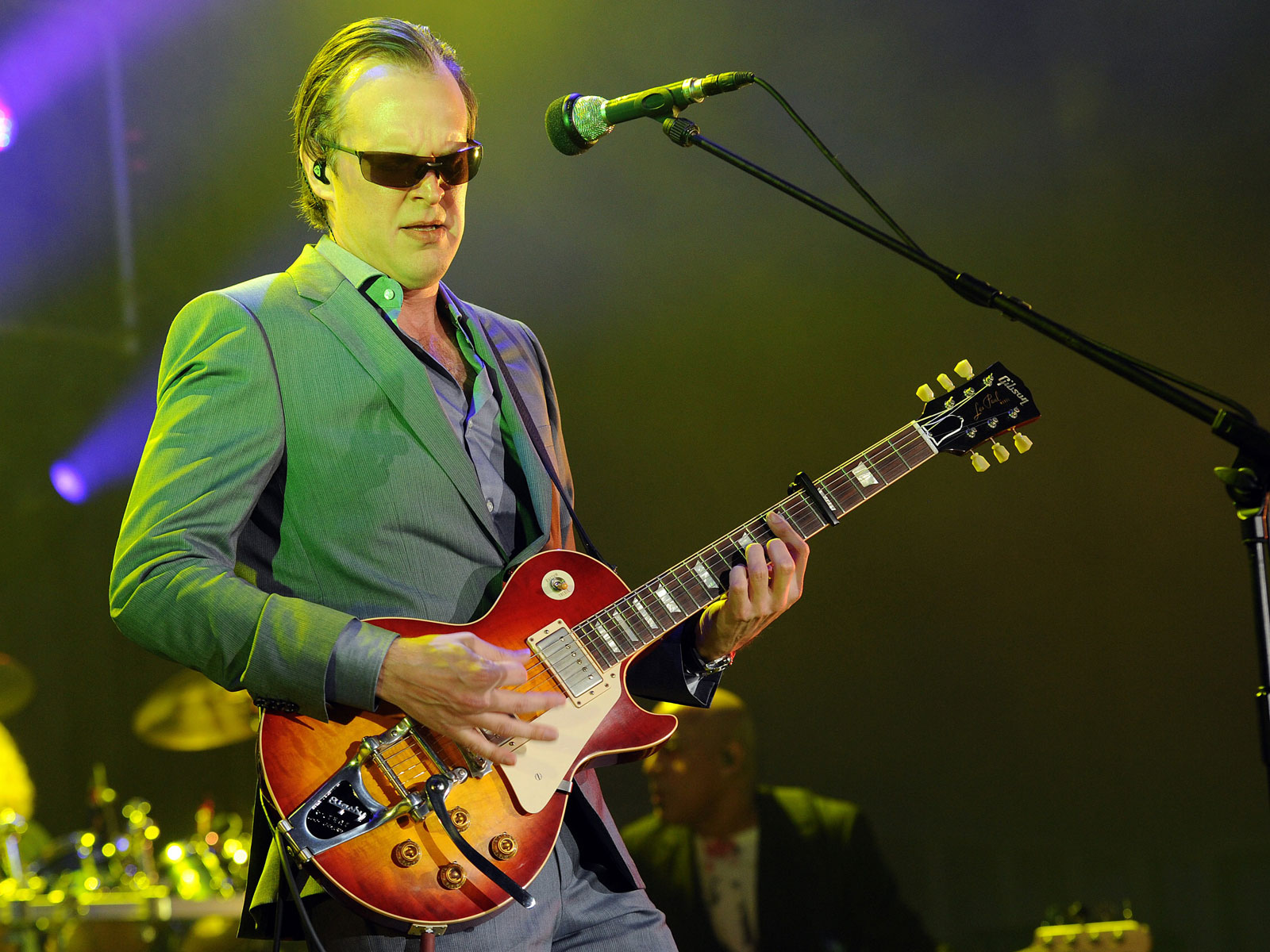
Joe Bonamassa
Modern blues master Joe Bonamassa is undoubtedly most famous for his killer blues rock soloing, but he's also a master of heavy, grooving riffs as the title track from 2009's The Ballad of John Henry proved. For Joe, that Zep groove came naturally.
Here he talks about what makes a great riff, whether it be blues, rock or metal...
What makes a great riff for you?
"A great riff is something that hits you right away. Just Got Paid by ZZ Top is a fantastic riff, as is Heartbreaker by Led Zeppelin. Another is I'm A Mover by Free, and obviously anything by Sabbath. Immediately you're drawn to them, you don't know anything about the song yet, but the riff pulls you in. It gives you a sense of anticipation about what's to come."
The Ballad of John Henry has a real Zeppelin style groove. How did it come about?
"It came about because of the way I wrote the riff. The demos I record are the crudest things possible - just me and a guitar - so there's no groove when I write them. When it came to putting a feel to it, [the song] naturally lent itself to that Zeppelin-y thing and, of course, there's that sort of reverse Kashmir bridge as well.”
How do you keep your writing fresh?
"You have to listen to a lot of music. People are shocked when they find out what I listen to on my iPod. It's not all blues or blues rock, I listen to everything from John Legend to metal. I find little bits and pieces that inspire me from lots of different kinds of music, whether that be Iron Maiden or something else. If you leave your mind open, it just seeps in."
Can you give us some examples?
"When you go to write something in your own genre, all that stuff you listen to just comes out. You might write a riff using a lot of semitones that moves you into more Indian-sounding scales, or you might base an idea on an Al Green, R&B type of chord progression. All that stuff kinda works when you use it in the context of blues rock because it sounds fresh. Most blues people don't take stuff from those influences."
What are your top five blues riffs?
"The best song ever has to be Born Under A Bad Sign [Albert King]. It's just fantastic - I think it's devastating from the first note. I Ain't Superstitious by Howlin' Wolf... I like the Jeff Beck version, too. The Thrill Is Gone [popularised by BB King] is an obvious choice, and how can you not have I'm A Man by Bo Diddley?"
Joe Bonamassa - The Ballad Of John Henry:
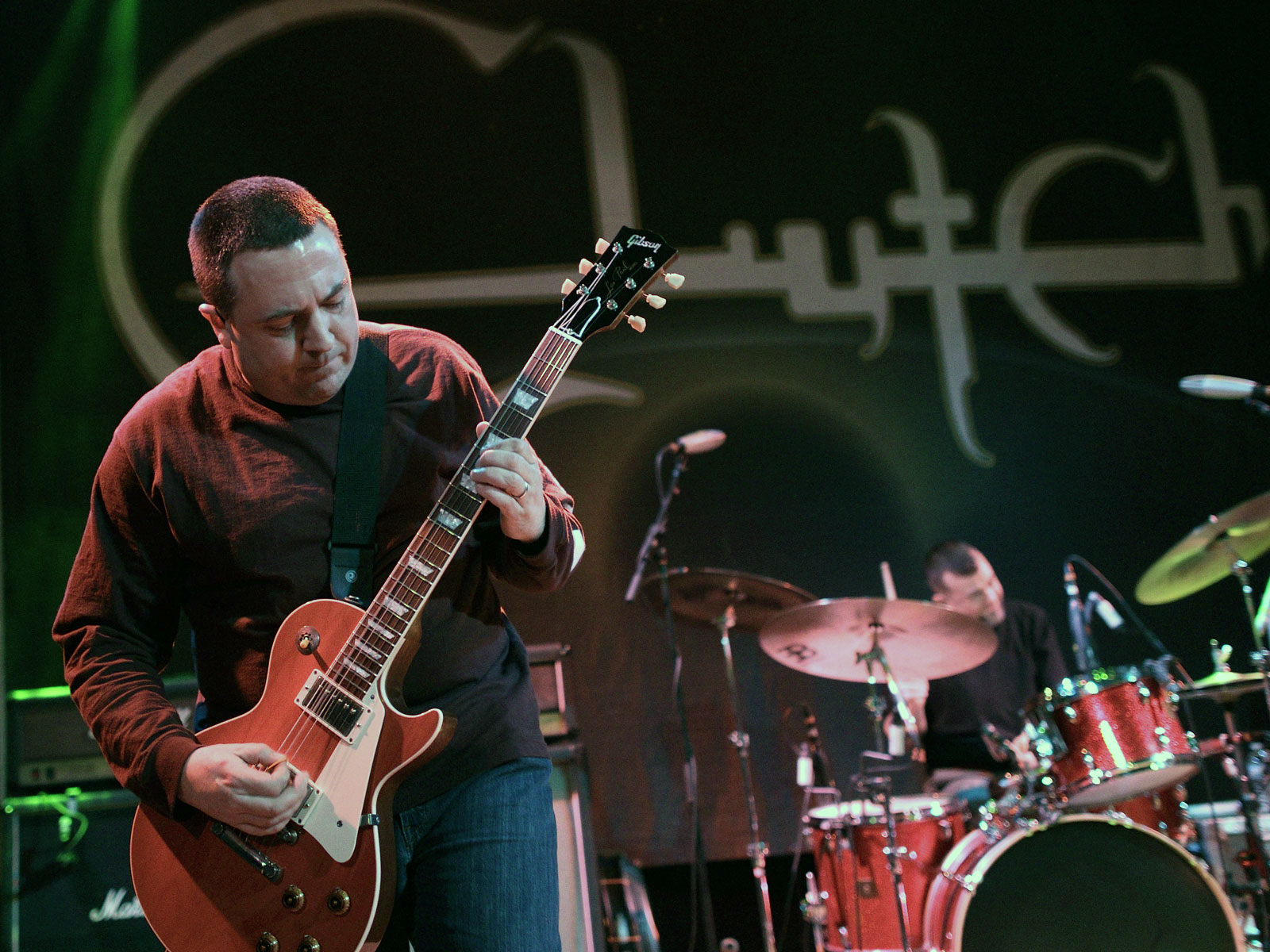
Tim Sult, Clutch
50,000 Unstoppable Watts is one of American hard rock guitarist Tim Sult's finest moments. A muscular, masterful and finely honed riff that still sends audiences into frenzy, he wrote it pretty much on the fly.
Sickening, we know, but as Tim says here, sometimes the best riffs come about when you're jamming with your band-mates...
How did you come up with the chorus riff to 50,000 Unstoppable Watts?
"Honestly, it was really simple. I just started playing it. There was absolutely no thought process whatsoever. The pre-chorus was actually a part that I'd worked on for a long time. Then our bass player Dan [Maines] threw in that tail riff at the end of the pre-chorus that brought everything together.
“As far as the chorus riff goes, it was 100 percent spur of the moment while we were jamming in our drummer JP's [Jean Paul Gaster] basement, and the rest of the song fell into place from there. All the parts flow, like a good rock song is supposed to."
What are your top three Clutch riffs?
"That's a hard one. I know people like Spacegrass, which is a classic riff that our bass player came up with, but I've heard that song so many times I could never say that's my favourite. So from the point of view of a fan, I'd say Spacegrass and Big News I are very memorable riffs; they're beaten into your head."
Do you find it easy to write riffs?
"A lot of times, I get my best ideas out when our drummer is playing along with me. It's good to have something powerful behind the whole process instead of sitting in my room with a drum machine."
What are some of your favourite riffs by other bands?
"I like a lot of The Allman Brothers [Band] instrumental stuff, like In Memory Of Elizabeth Reed. I know it's not very riffy, but they are great guitar lines. The influence of The Allman Brothers and their instrumental jams has slowly crept into my playing. Of course, Sabbath have the best riffs ever as far as I'm concerned."
Clutch - 50,000 Unstoppable Watts:
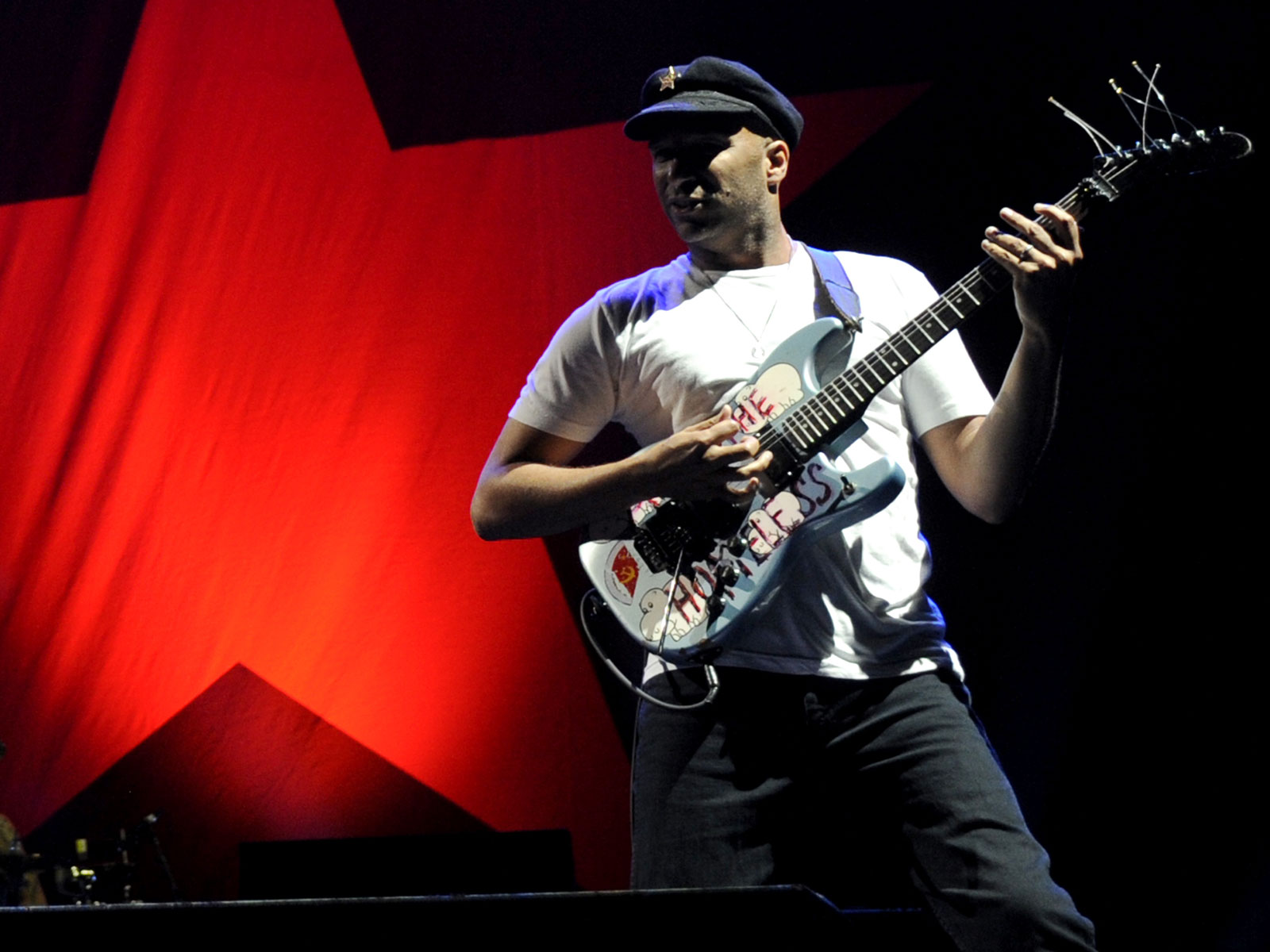
Tom Morello, Rage Against The Machine/Prophets Of Rage
One of the most prolific riff writers of our generation, Rage Against The Machine's Tom Morello is as inventive on the guitar as he is sonically recognisable; from the smallest of squeals to the most towering of solos.
Unsurprisingly, Tom takes his lead from the godfather of metal, Tony Iommi, and lord of the (rock) riff himself Jimmy Page...
What is the key to writing the perfect guitar riff?
“My influences come from bands like Led Zeppelin, Black Sabbath and Deep Purple. I think that’s one of the things that made Rage Against The Machine stand out from the horrific bunch of rock-rap groups that sprung up in our wake - their metal influences were more in the Metallica and Megadeth vein, which maybe didn’t mesh quite as well. The thing about Zeppelin and Sabbath is that there’s a great rolling groove to their heaviest riffs and that’s something I’ve incorporated in my right hand.”
We heard you write many of your riffs on a classical guitar. What’s the advantage of that?
“It came out of necessity, of times when I had room-mates or sleeping girlfriends and I couldn’t exactly crank up the half-stack! I would record the ideas and use them later in rehearsal. If I had an idea in the middle of the night, I had that handy cassette recorder there and, frankly, it became a bit of a superstition over time. Some pretty fine riffs just kept coming so I thought, ‘Why mess with a winning formula?’”
So how do you make riffs in the pentatonic scale sound fresh?
“One of my mottos is, ‘If you can’t play a riff on just the first and second dots, then it’s probably not worth playing’ and while that might be an overstatement I think there's a greater truth in that. What makes a riff come to life, that differentiates it from the huge catalogue of riffs that came before, is not just the selection of notes, but the ghost notes and grace notes between them and the elasticity of the right rhythm-hand guitar playing. Name a great riff writer - whether it’s Eddie Van Halen or Tony Iommi - and it’s all in their right hand.”
How important are small technique embellishments (for instance, pinch harmonics, vibrato, slides) to the riff writing process?
"At this point, it's certainly not conscious. I started playing late - when I was 17 - and spent years catching up, gaining technical proficiency. Practicing eight hours a day for years... At that point I was merely honing my technical skills as a musician. I was not an artist. I could copy Randy Rhoads solos but I certainly wasn't writing anything as exciting or brilliant.
“Then there was a point when I abandoned the 'practice by ropes' and focussed most of my attention on the eccentricities of my own playing, and that's when I had the real break-through. Then it was less about, 'Ok, in order to write a good riff I must incorporate vibrato or hammer-on's' and I broke through that technical barrier. It sounds kind of cliché, but just feeling the music coarse through me… You fight hard to get your antenna high enough that you might pull down some ideas from the ether and then, once they start coming, you accept them for what they are."
You’re well known for your innovative use of effects in your solos, but what effects do you like to use in riffs?
“The number of effects I use are almost fewer than any other player. It’s a DigiTech Whammy pedal, a wah-wah pedal, an EQ that I only use as a boost, a [MXR] Phase 90 that just sits there unused, and occasionally a tremolo pedal. I’ve found a lot of creative space by setting those limitations and forcing myself to use my imagination to find interesting combinations. Not just turning on an effects pedal, but finding ways to manipulate the wood, wires and strings of the instrument to make guitar music that doesn’t sound anything like a guitar.”
One of our favourite RATM riffs is Wake Up. Who wrote it?
"I can remember the room that song was written in. The song was very much a collaborative effort. The big riff, I believe that was Timmy [Commerford, bassist]. At the time he was a big fan of Helmet and that might have been an influence.
“I remember the day we wrote that song and everybody was pitching in their two cents. At that time we had nothing to lose - we weren't trying to get a record deal. That song is seven and a half minutes long without a chorus. We weren't writing for radio with that one!”
Rage Against The Machine - Wake Up:
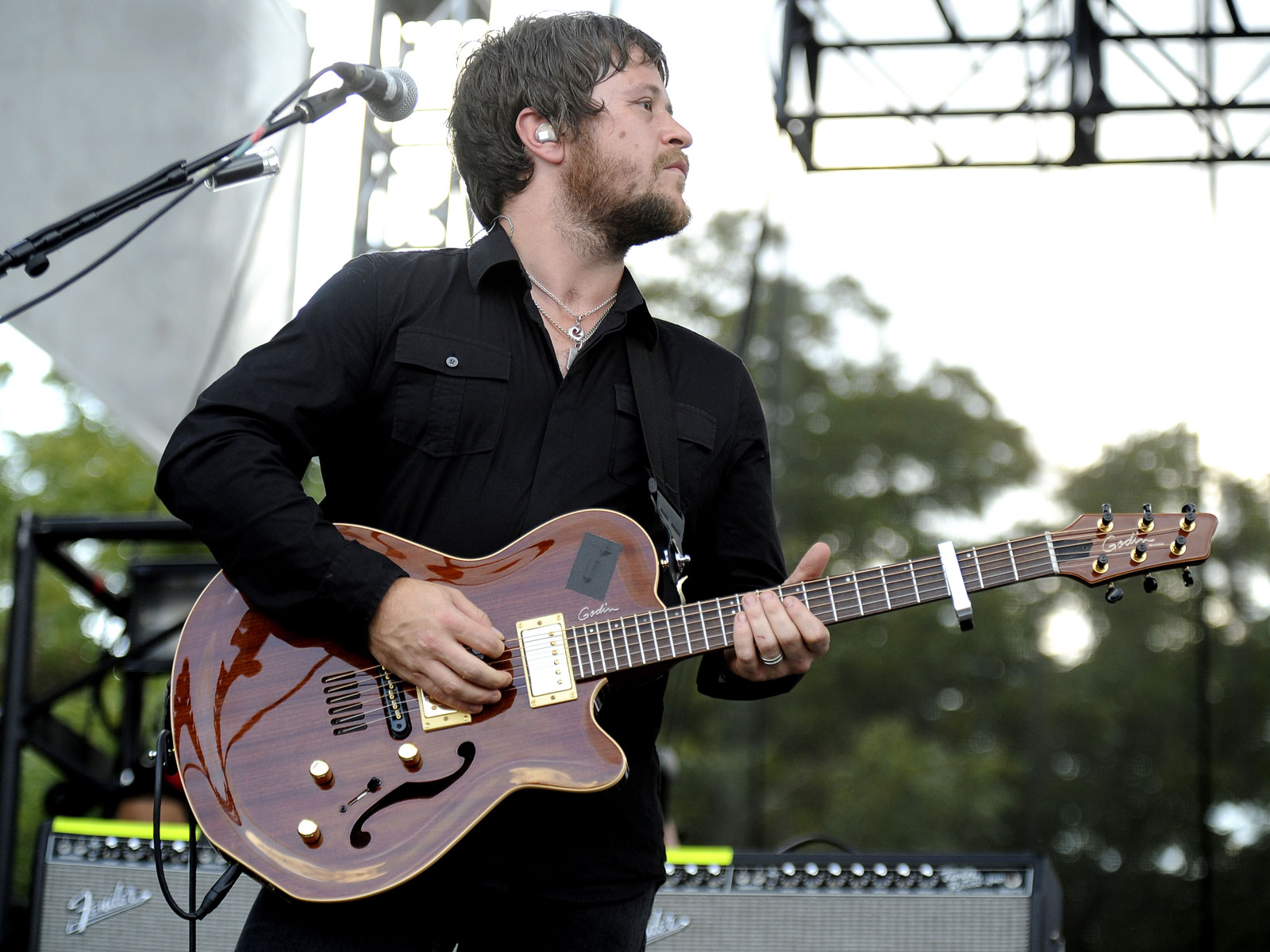
Mark Potter, Elbow
A Page-esque bluesy barnstormer, Grounds For Divorce was chosen as the lead single for Elbow's 2008 Mercury Prize winning break through album The Seldom Seen Kid. But just how did guitarist Mark Potter come up with it?
When did you come up with the riff to Grounds For Divorce?
"You know how most guitarists have something that they play every time they pick up a guitar? Well, that was my something. For ten years the lads never seemed to notice it. I'd play it and look around the room expectantly and be like, 'Oh, well, no reaction again.' Then about two years ago I played it and Guy [Garvey, vocals] was like, 'What's that?' I said, 'What do you mean what's that? I've been playing it for ten years!"
How did you record the song?
"It was a Gibson Les Paul through an Electro-Harmonix Big Muff pedal and then I used a '54 Vox AC30 head with a vintage Marshall 4x12 cab. It's not like I thought, 'I'm writing a rock riff, therefore I must use a Les Paul'. My favourite guitar is a Gibson ES-335 but I played it on that and it didn't quite have the crunch I was going for, so as soon as I picked up my Black Beauty Les Paul that was it.
“Originally I recorded the one riff and then I thought, 'How about if I track it two or three tones up the octave?' Then I played it on a bass, bending the note on that as well. When we twinned these four or five signals of the same riff played in five places on the guitar it sounded massive."
How did you build the song around the riff? It's not a traditional 'bed' for a rock riff…
"Originally Guy tried to sing along with it but it didn't work because it's such a bluesy riff. It didn't sound genuine, but the riff on its own did stand up and eventually we decided not to have a vocal on it. I came up with that slide guitar riff, which is very simple and I thought, 'If we keep the verse acoustic then this dirty riff kicks in on the chorus, it's going to be all the more effective'.
“We did about three or four versions of it - there was a dancey, Stereo MCs-style version and a full-on rock version, which was pretty heavy with distorted guitars all the way through."
What do you think it is about that combination of notes that gives the riff its power?
"It's quite a lazy sounding riff. It's a little bit sleazy, especially because of the way the notes are bent, and because it features several guitars tracked and bending, the notes are never going to sound the same. If it was done on an octave pedal, which I do live, it hasn't got the same feel because the bends sound the same."
Elbow - Grounds For Divorce:
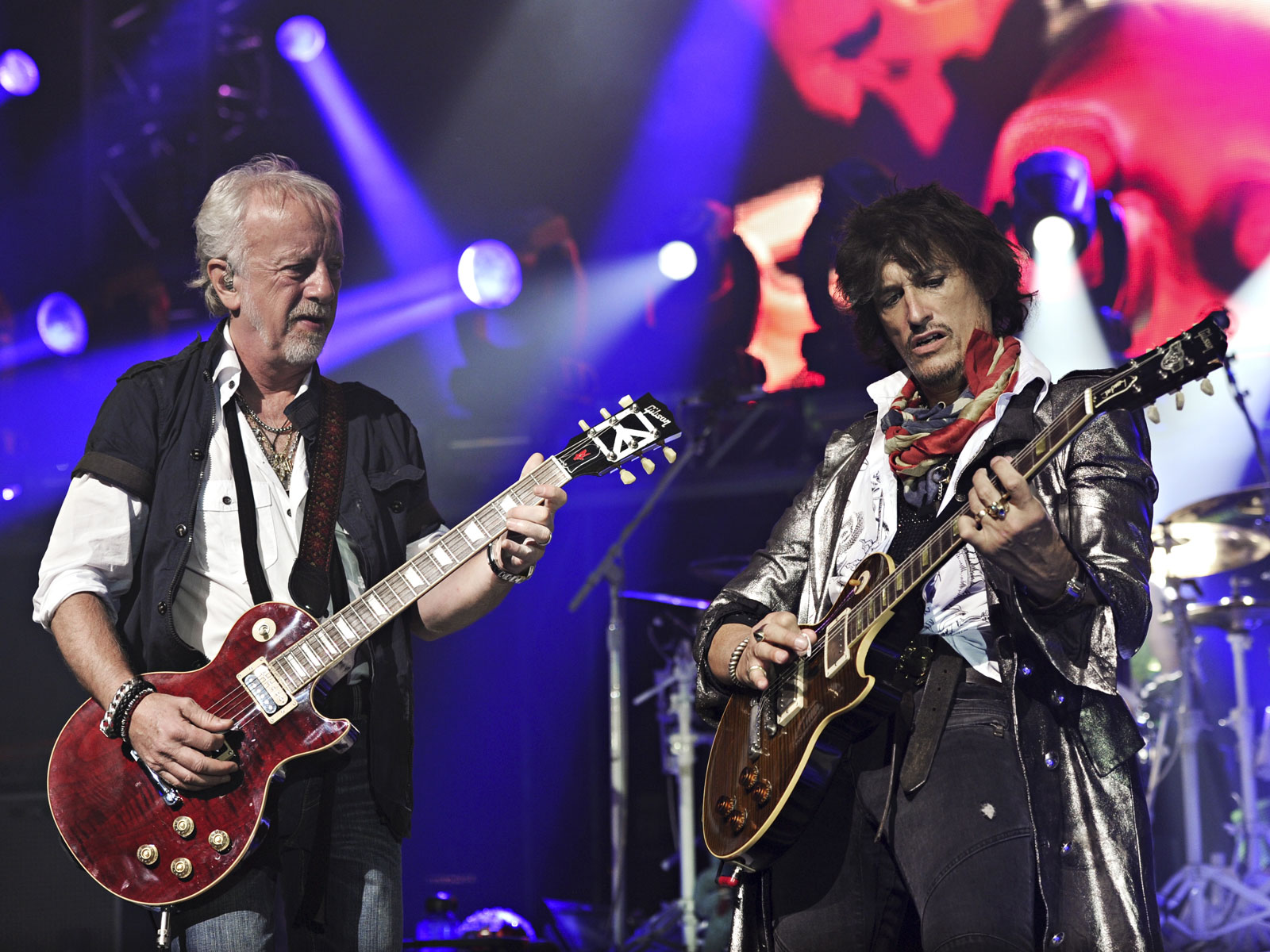
Joe Perry and Brad Whitford, Aerosmith
Can you imagine writing that hulking great intro to Love In An Elevator, or the sharp-shooting riff from party anthem Walk This Way? While most of us can only dream of creating such iconic riffs, Joe Perry and Brad Whitford recall actually writing them...
How did you come up with the main riff on Love In An Elevator?
Joe Perry: "That riff floated my way during one of mine and Steven [Tyler]'s writing sessions. I was probably listening to Jimi Hendrix on the ride up. I was talking to Rick Rubin once about writer's block and he said, 'Make a CD of all the songs that made you love rock 'n' roll. Listen to that over and over again and it'll start the wheels going'. So I was listening to a lot of Hendrix and [Love In An Elevator] was one of those riffs that played itself. I picked up the guitar and it just started coming out."
Did the riff change much from its conception?
Joe: "I remember it came out pretty well done! I remember this clearly because there's a video of us actually writing that song, and it was one of those days when we were really on the ball - the video tape was running and it just captured the moment."
Are there any particular techniques you use for playing the riff?
Brad Whitford: "To get it sounding big I use a fairly clean sound. I try to stay faithful to the way Joe created it because he has a very unique technique that he uses, which is essentially his picking hand, so when it's played correctly it's very powerful."
And how did you come up with the riff to Walk This Way?
Brad: "That riff fell out of the sky - all of a sudden there's Joe playing this riff and it was just, 'We've got to finish this! We've got to figure out something!' I think Steven lost his first set of lyrics - he left them in a taxi or something - so he came up with a whole new idea for the lyrics and that was that."
Joe: "That one I kind of planned around the fact that I was always interested in funk, from the really laid back funk of The Meters to the high energy funk of James Brown and everything in between, whether it's Sly or the Funkadelics or whatever. I was always interested in incorporating it into rock. I can remember thinking, 'Rather than cover someone else's, why don't I write my own?' Whether that came out showing the colours I intended it to - I don't know if it's true blue funk or what - but in my head that's how it came out that day."
Is there a particular way you go about creating a riff?
Joe: "For me, a lot of it is picking up a different guitar. Let's say, try and play heavy metal on an acoustic guitar, attack things from a totally different way, and that tends to inspire some different sounds or a rhythm. A lot of it comes from the rhythm of things first. If it doesn't make your hips move, I haven't got much use for it."
Aerosmith - Walk This Way:

Phil Collen, Def Leppard
A favourite dance track for strippers the world over, Pour Some Sugar On Me is one of Def Leppard's biggest hits. With a massively recognisable intro, when that sleazy riff kicks in you know you're in for a super-sized slab of rock goodness.
Def Leppard's Phil Collen is a master rock riff writer, and for Pour Some Sugar On Me he (and Robert John 'Mutt' Lange) packed in not one but two saucy riffs.
How did Pour Some Sugar On Me come about?
"[Def Leppard frontman] Joe Elliot was sitting in a corridor playing acoustic guitar and singing, 'Pour some sugar on me'. Our producer Mutt Lange was like, 'What's that?' Ten days later we had the whole thing written and recorded. It was the last song we recorded for Hysteria [1987]."
The song actually has two big riffs - the intro and the verse.
"Yeah. Mutt came in with this country thing that became the intro riff. He played it with his fingers. I can't really do that so I picked it. I used a metal pick and it sounded different. Then we needed the rest of the verse so I came up with that big rock riff."
What gear did you use to record that song?
"The whole album was pretty much done on a Tom Scholz Rockman. We ran a cable from the headphone socket to the mixing desk. The intro riff was played on my silver and black crackle Jackson. I did two tracks with that and then over-dubbed with a Fender Telecaster. The rest of the song was played on 'Felix', my black 1978 Fender Strat that was fitted with a humbucker from my original Ibanez Destroyer."
What other Def Leppard riffs are you particularly proud of?
"Promises [Euphoria, 1999] was really cool. We thought, 'Wouldn't it be great if we had a song that was a bit like Photograph [Pyromania, 1983] and Armageddon It [Hysteria]?' These riffs, they just come out of nowhere. Sometimes you'll be sitting on the toilet and think, 'Hang on a minute, I've got this idea.' Promises was one of them. I don't think I was on the toilet, though!"
What do you think makes a great riff?
"Simplicity is important. A riff has to be memorable but you have to keep out of the way of the vocal. Guitar parts have to be either rhythmic or melodic. If a riff is too complicated, or it's in some weird time signature, 90 per cent of your audience are going to turn off. Also, a great riff has to be played right. You have to give it some stick. You've got to mean it."
Def Leppard - Pour Some Sugar On Me:
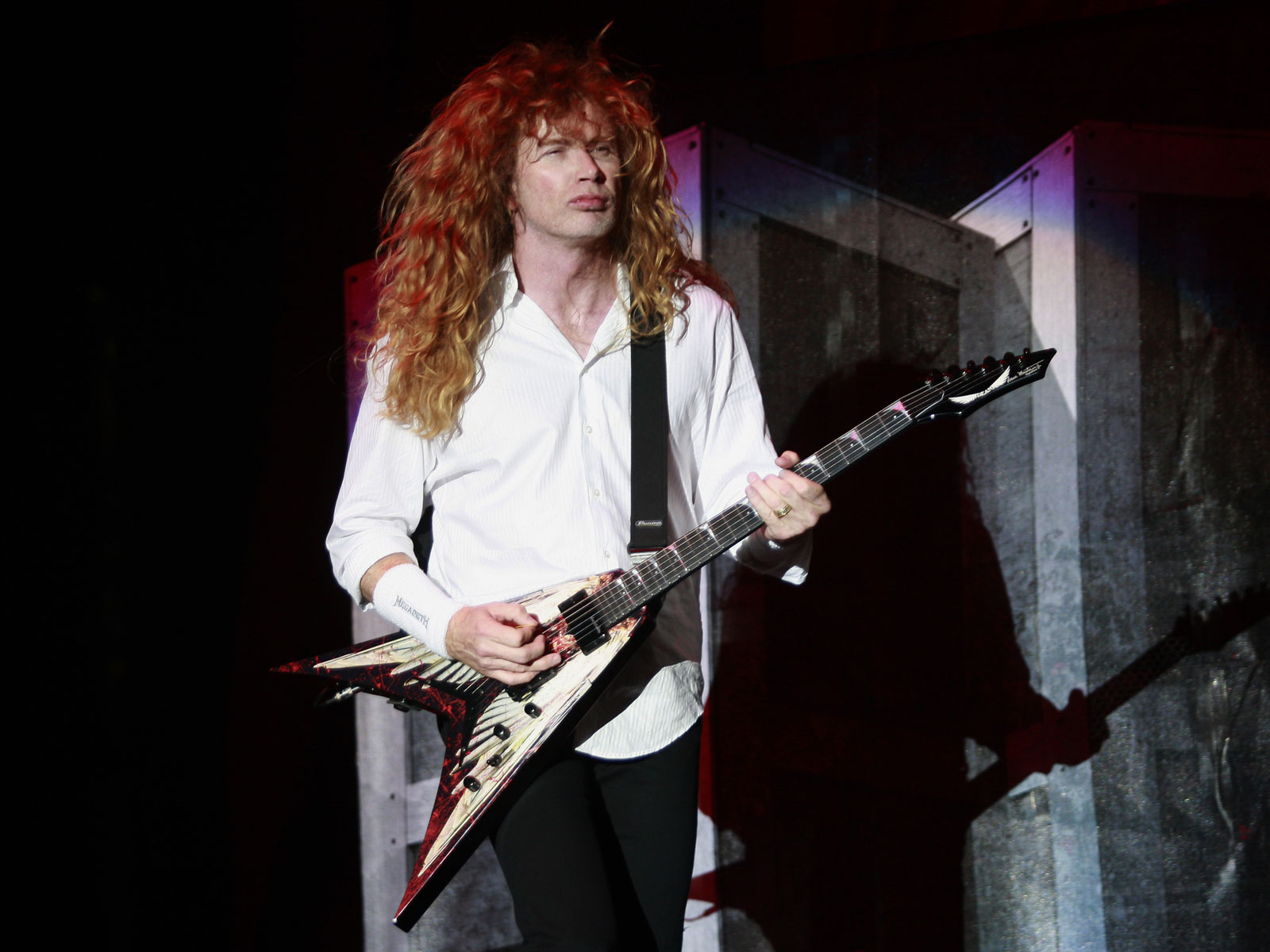
Dave Mustaine, Megadeth
Looking for a metal track that's packed to the hilt with jaw-dropping riffs? Try Hangar 18 from Megadeth's classic 1990 album Rust In Peace.
Written by the inimitable Dave Mustaine when he was just a teenager, Hangar 18 stayed frustratingly in the vaults while he was in Metallica, finally seeing the light of day with Megadeth.
Hangar 18 is bursting with riffs. What do you remember about writing the song?
"I wrote a lot of songs when I was really young. Rust In Peace... was written before I was in my first band, Panic. So was Mechanix. Hangar 18 was just another one of those songs, although it was actually under a different title. These were songs that I took with me to that first band; didn't get a chance to get them out in my second band [Metallica], but my third one [Megadeth] I did."
Why do you think Hangar 18 excites guitarists so much?
"Probably because the sections are so different. You can almost hear The Beatles influence and the Led Zeppelin influence at the front of the song, then in the middle of the break when we go to the first extended solo section it's a very Spanish, jazzy kind of part. Then the end solo, when the guitar duel takes over, it's get the fuck out of the way!"
What gear did you use to record the song?
"I used a Jackson guitar with Seymour Duncan pickups. [As for amplifiers] it was Marshall stuff. We did have VHT amps and Bogner preamps laying around, but I've always been a Marshall guy. I traded my motorcycle for a Marshall stack."
Megadeth - Hangar 18:

Björn Agren, (ex-Razorlight)
Rhythm, melody and your choice of guitar tone all have the ability to make or break a guitar riff. Plus, as former Razorlight guitarist Björn Ågren explains, you should never underestimate the sound of silence.
Confused? Understanding the power of silence (or, in other words, when not to play) can actually be your greatest ally in helping a riff have more impact...
What is your definition of a guitar riff?
“A riff to me is any repeated phrase on a guitar, really. It could be a melody or broken chords or 5ths... As long as it returns several times and has a distinct identity - as opposed to just strumming - then it’s a riff. The perfect riff has to be memorable. Ideally, you want people to think of the riff and the chorus vocal at the same time when the song is mentioned.”
How do you think indie rock riffs differ from those in heavier genres of music?
“In indie rock music, I’d say it’s quite rare for a riff to carry an entire song. It serves as more of a ‘tagline’. You also have to ‘play the spaces’ a lot more. If you’re loud the whole time, you’re not really loud. There’s much more dynamics and punch to be had by keeping quiet. I actually think you get more power out of a guitar by turning the gain down because distortion blurs the attack. The masters of the indie rock riff are The Strokes. Listen to a song like Reptilia and the entire thing is built on one brilliant riff after another.”
How important is guitar tone when you’re putting together riffs?
“I’m obsessed with finding different guitar tones and textures, so I think the sound of a particular part is very important. With the right tone you can just play one note and it will sound awesome. And tone decides how the part sits in the song.”
How essential is a good grounding in theory when you’re writing a riff?
“Taste is everything to me. If you can’t work out whether something sounds good or not by listening to it, you’re dead in the water. After a while, though, you tend to find where the scales are in relation to each other up and down the neck, but it’s a natural process. My main thing with guitar playing is that it should be fun - you’re trying to write something that will make your song better. A great example here is the Take Me Out riff [Franz Ferdinand].”
What one tip would you offer players who are trying to improve their riff writing?
“Try to write a riff that’s 50 per cent silence! I cannot stress enough how important it is to learn how not to play. It took me about 10 years of playing the guitar to figure that one out.”
Razorlight - In The Morning:
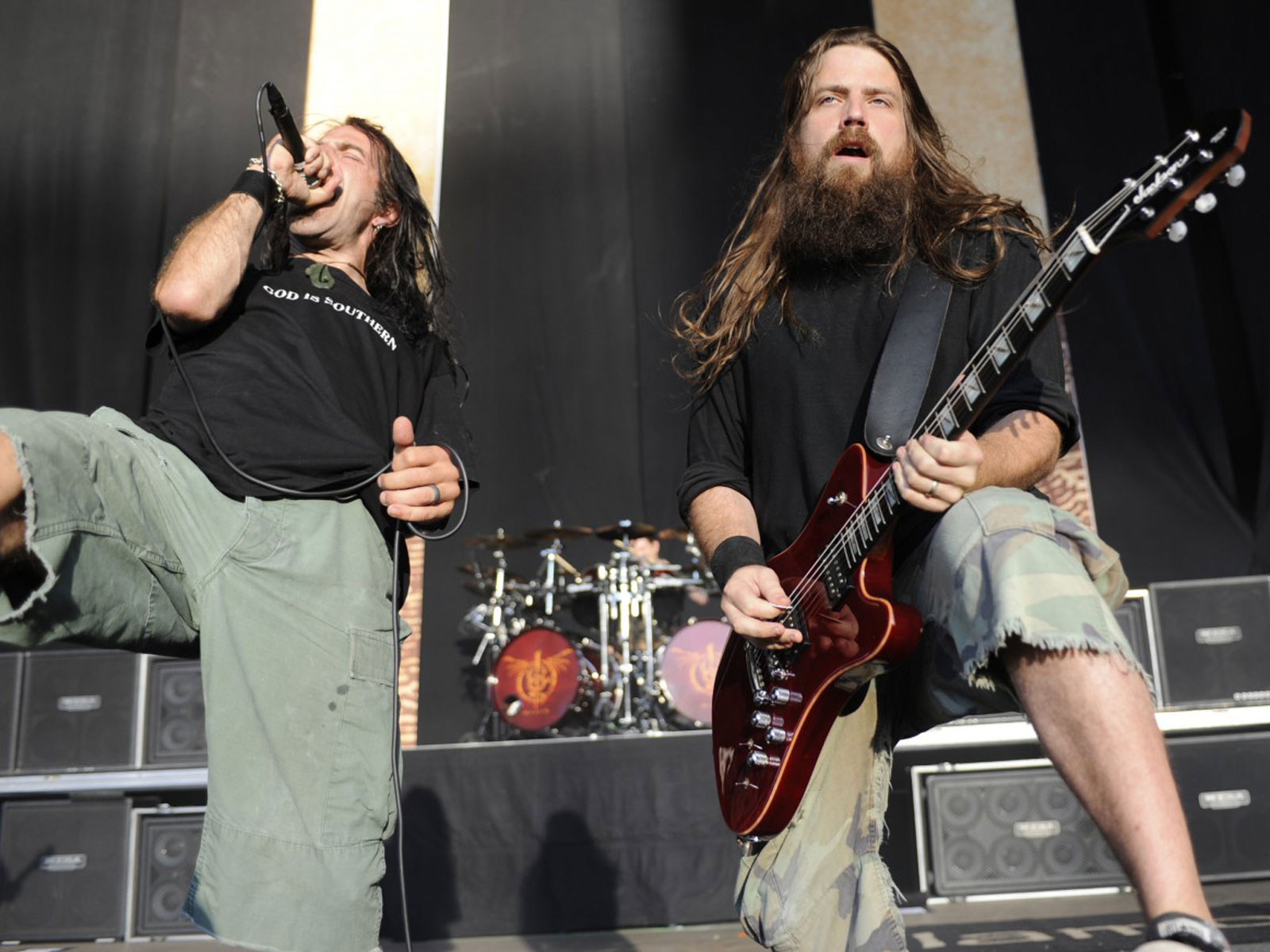
Mark Morton, Lamb Of God
Bringing to mind the muscle and punch of Pantera's best riffs, Redneck, taken from Lamb Of God's 2006 album Sacrament, is a real slugger; shot-through with attitude and adrenaline. Guitarist Mark Morton was heavily influenced by the swagger and spirit of Southern rock when writing it.
As you can tell from even the most glancing of listens to Redneck's riff, for Mark it's all about the head-bobbing groove...
Where did the inspiration for the Redneck riff come from?
"I was trying to incorporate some blues influenced, Southern swagger into metal. I was thinking about some of the older music that I'm into, like Lynyrd Skynyrd and The Allman Brothers Band; taking that mixture of pentatonic blues and chromatic passing notes and fusing it into a metal riff. I was sitting in my den before practice and I still hadn't come up with anything. I was playing the guitar, seeing what I could come up with, and within an hour or so I had written Redneck."
What gear did you use to record the riff?
"The guitar I used on it was my '75 Gibson Les Paul Goldtop. That's pretty much my studio guitar. As for amps, we did a lot of re-amping through amp modellers and that kind of stuff. I can't remember which filters we ran through."
Do you think Redneck is a challenging riff to play?
"I don't find it particularly challenging in terms of technique, but I suppose it depends on your skill level. It's probably more simple than most of our stuff and would fall in the below average category in terms of the technique required."
What makes a riff memorable?
"Sometimes the simple stuff hits harder. That's the big difference between me and Willie [Adler]. When he writes riffs he likes them to be really challenging - fast and tricky. I don't think I'm necessarily from that school. For me, I'd rather a riff made my head bop. I can pull off some tricky stuff, too, but for me it's more about the groove."
Lamb Of God - Redneck:
Join us in celebrating World Guitar Day 2017! Get playing, and share your best guitar videos, pictures, tips and stories with hashtags #WGD17 #worldguitarday